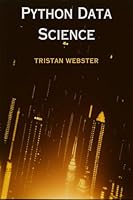
Machine Learning in Biotechnology and Life Sciences: Build machine learning models using Python and deploy them on the cloud
- Length: 408 pages
- Edition: 1
- Language: English
- Publisher: Packt Publishing
- Publication Date: 2022-01-28
- ISBN-10: 1801811911
- ISBN-13: 9781801811910
- Sales Rank: #2350697 (See Top 100 Books)
Explore all the tools and templates needed for data scientists to drive success in their biotechnology careers with this comprehensive guide
Key Features
- Learn the applications of machine learning in biotechnology and life science sectors
- Discover exciting real-world applications of deep learning and natural language processing
- Understand the general process of deploying models to cloud platforms such as AWS and GCP
Book Description
The booming fields of biotechnology and life sciences have seen drastic changes over the last few years. With competition growing in every corner, companies around the globe are looking to data-driven methods such as machine learning to optimize processes and reduce costs. This book helps lab scientists, engineers, and managers to develop a data scientist’s mindset by taking a hands-on approach to learning about the applications of machine learning to increase productivity and efficiency in no time.
You’ll start with a crash course in Python, SQL, and data science to develop and tune sophisticated models from scratch to automate processes and make predictions in the biotechnology and life sciences domain. As you advance, the book covers a number of advanced techniques in machine learning, deep learning, and natural language processing using real-world data.
By the end of this machine learning book, you’ll be able to build and deploy your own machine learning models to automate processes and make predictions using AWS and GCP.
What you will learn
- Get started with Python programming and Structured Query Language (SQL)
- Develop a machine learning predictive model from scratch using Python
- Fine-tune deep learning models to optimize their performance for various tasks
- Find out how to deploy, evaluate, and monitor a model in the cloud
- Understand how to apply advanced techniques to real-world data
- Discover how to use key deep learning methods such as LSTMs and transformers
Who this book is for
This book is for data scientists and scientific professionals looking to transcend to the biotechnology domain. Scientific professionals who are already established within the pharmaceutical and biotechnology sectors will find this book useful. A basic understanding of Python programming and beginner-level background in data science conjunction is needed to get the most out of this book.







